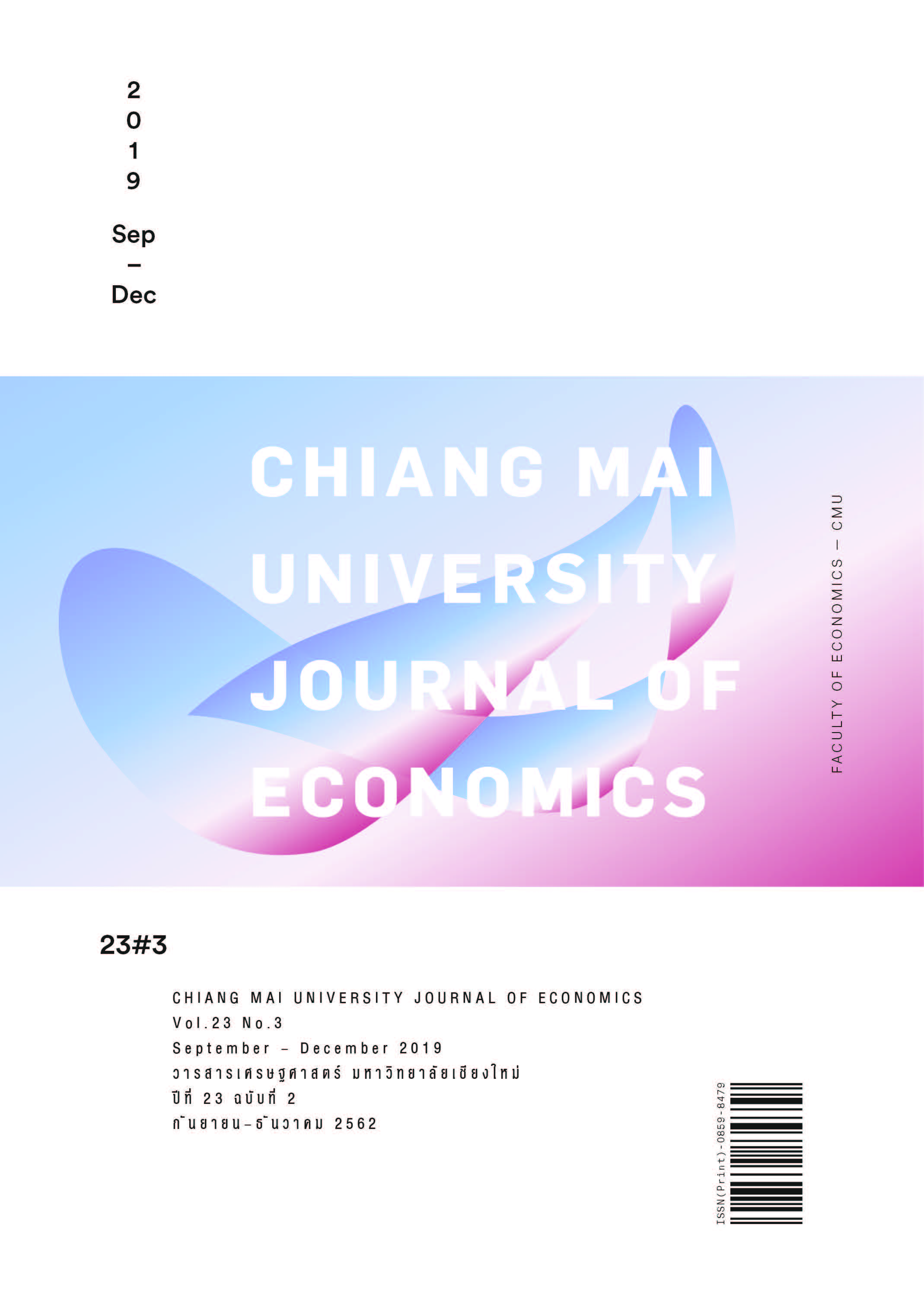การวิเคราะห์อัตราแลกเปลี่ยนเงินบาทด้วยแบบจำลองโครงข่ายประสาทเทียม
Keywords:
Exchange rate, Artificial Neural Network,ARDLAbstract
This research aims to study the variables that affect the exchange rate of the Thai baht against the US dollar using the model based on the concept of purchasing power parity. The monthly data from January 2010 to March 2019 are used for estimation. Two estimation techniques are employed in the study. The first one is Auto Regressive Distributed Lag Model (ARDL) approach with Bound test statistic. The other is ANN model which is non-linear model. From ARDL results, we can conclude that an increase relative output lead to baht appreciation of 0.692%. According to the relative important variables from ANN results, it shows that relative output is the most influential variables for Thai baht exchange rate. The result from ANN is consistent with the ARDL model. In addition, in terms of error estimation comparison between non-linear model as ANN and simple linear model, the result shows that ANN perform better than the linear model.
Downloads
Published
Issue
Section
License
All opinions and contents in the CMJE are the responsibility of the author(s). Chiang Mai University Journal of Economics reserves the copyright for all published materials. Papers may not be reproduced in any form without the written permission from Chiang Mai University Journal of Economics.
ข้อคิดเห็นที่ปรากฏและแสดงในเนื้อหาบทความต่างๆในวารสารเศรษฐศาสตร์มหาวิทยาลัยเชียงใหม่ ถือเป็นความเห็นและความรับผิดชอบโดยตรงของผู้เขียนบทความนั้นๆ มิใช่เป็นความเห็นและความรับผิดชอบใดๆของวารสารเศรษฐศาสตร์ มหาวิทยาลัยเชียงใหม่
บทความ เนื้อหา และข้อมูล ฯลฯ ในวารสารเศรษฐศาสตร์มหาวิทยาลัยเชียงใหม่ ถือเป็นลิขสิทธิ์เฉพาะของคณะเศรษฐศาสตร์มหาวิทยาลัยเชียงใหม่ หากบุคคลหรือหน่วยงานใดต้องการนำทั้งหมดหรือส่วนหนึ่งส่วนใดไปเผยแพร่ต่อหรือเพื่อกระทำการใดๆ จะต้องได้รับอนุญาตเป็นลายลักษณ์อักษร จากวารสารเศรษฐศาสตร์ มหาวิทยาลัยเชียงใหม่






